Kessinger Brothers - Complete Recorded Works In Chronological Order, Vol. 1-3 (1928-1930) (1997)
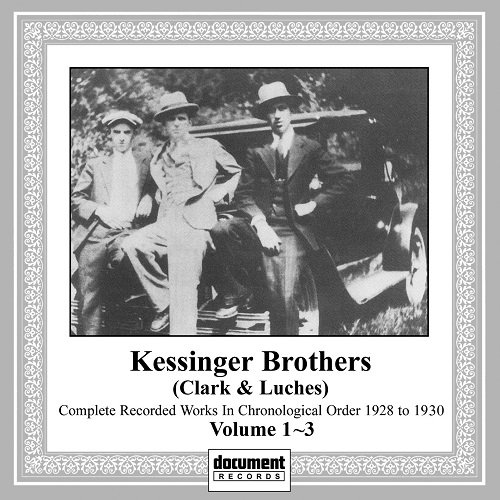
Artist: Kessinger Brothers
Title: Complete Recorded Works In Chronological Order, Vol. 1-3 (1928-1930)
Year Of Release: 1997
Label: Document Records
Genre: Blues, Country
Quality: FLAC (tracks+.cue,log,scans)
Total Time: 66:26 + 63:48 + 65:02
Total Size: 412 MB
WebSite: Album Preview
Tracklist:Title: Complete Recorded Works In Chronological Order, Vol. 1-3 (1928-1930)
Year Of Release: 1997
Label: Document Records
Genre: Blues, Country
Quality: FLAC (tracks+.cue,log,scans)
Total Time: 66:26 + 63:48 + 65:02
Total Size: 412 MB
WebSite: Album Preview
Kessinger Brothers, Vol. 1 (1928-1929)
1. Chicken In The Barnyard
2. Forked Deer
3. Hell Amongst The Yearlings
4. Patty On The Turnpike
5. Devil's Dream
6. Wild Horse
7. Wednesday Night Waltz (La Valse De Musicien)
8. Goodnight Waltz (La Valse Des Amoureux)
9. Garfield March
10. Kanawha March
11. Sixteen Days In Georgia
12. The Girl I Left Behind Me
13. Arkansas Traveller (Le Reel Des Voyageurs)
14. Turkey In The Straw
15. Old Jake Gillie
16. Sally Johnson
17. Portsmouth
18. Wild Goose Chase
19. Dill Pickles Rag
20. Tug Boat
21. Johnny Bring The Jug 'Round The Hill
22. Birdie
23. Mississippi Sawyer (Le Reel Gaspesien)
Kessinger Brothers, Vol. 2 (1929)
1. Richmond Polka (Le Reel De Richmond)
2. Soldier's Joy (Set Americain - 3ie Parte)
3. Chinky Pin (Set Americain - 2ie Parte)
4. Sally Goodin
5. Sourwood Mountain
6. Long-Eared Mule (Set Americain - 4ie Parte)
7. Done Gone (Set Americain - 1er Parte)
8. Brownstown Girl (Brownstown Gal)
9. Josh And I
10. Boarding House Bells Are Ringing Waltz (Valse De La Vieille Maison)
11. Rat Cheese Under The Hill
12. Durang Hornpipe
13. Hot Foot
14. Over The Waves Waltz (Sur Les Vagues)
15. Black Hawk Waltz (La Valse De L'Epervier)
16. West Virginia Special
17. Salt River
18. Kanawha County Rag
19. Going Up Brush Fork (Reel De Roberval)
20. McCloud's Reel
21. Liza Jane
22. Whistling Rufus
Kessinger Brothers, Vol. 3 (1929-1930)
1. Don't Let The Deal Go Down
2. Sopping The Gravy
3. Polka Four
4. Midnight Serenade Waltz (Serenade De Minuit)
5. Gippy Get Your Hair Cut
6. Little Brown Jug
7. Little Betty Brown
8. Wildflower Waltz
9. Ragtime Annie
10. Chicken Reel (Le Reel Des Poulets)
11. Mary Jane Waltz
12. Under The Double Eagle March
13. Steamboat Bill
14. Marching Through Georgia
15. Dixie
16. Lauterbach Waltz
17. Lonesome Road Blues
18. Pop Goes The Weasel
19. Regal March
20. Mexican Waltz
21. Neapolitan Two Step
22. Everybody To The Punchin'
23. Shoo! Fly
The approximately 70 or so tracks recorded between 1928 and 1930 by the Cassinger brothers Clark and Luches form one of the most complete and unique bodies of violin recordings in the history of old folk music. Although they weren't real brothers—Luches was actually Clark's nephew, made a "brother" by the head of a record company-the two played with empathy and zeal that generated an amazing amount of work. Some of their recordings were bestsellers in their day, but others were recorded at the beginning of the Depression and are so rare that almost no one has heard them. This is the first of a three-volume set that will restore almost all of their recordings. Clark Cassinger grew up in rugged Lincoln County, West Virginia, just a few miles south of Charlottesville, across from the Kanawha River. He was born on July 27, 1896, began studying music at the age of five and performed at dances when he was ten years old. Although his family boasted some violinists, he learned most of his style from local violinists such as George Dillons, the Glen brothers, and Ed Haley. Although Haley had never made commercial recordings, he was considered perhaps the best of the old West Virginia and Kentucky violinists, and from him the young Clark learned not only signature melodies such as "Forked Deer", but also the smooth technique of playing "long bow". After returning from the Navy, Clark returned to West Virginia, where he quickly gained recognition in local violin competitions; friends recall that he dominated the competition so much that other violinists often withdrew from the competition after hearing that Clark had entered it. But his path to national fame began in February 1928, when the old Brunswick-Balke-Collender company held a filming session in Ashland, Kentucky, about 30 miles from Charlottesville. Their talent specialist, James O'Keefe, had heard about the Cassingers and invited them to come, promising them a flat fee of $100 for each double-sided record accepted for release. So on a cold February day at 9:30 a.m., Clark and Luches arrived at Carter's gramophone and musical goods store on 217th Street in Ashland and made their first tracks. O'Keefe asked the couple to "practice" their version of "Wednesday Night Waltz," which had just been released on a competitive label by the Leake County Revellers and was selling at a furious pace. Clark knew this tune, he was an expert in performing waltzes, and he made an exciting version. Together with Goodnight Waltz, it became the brothers' first publication, one of their biggest sales. "We would have made a fortune if they had paid us royalties," Clark recalled years later. The sales success impressed the company so much that the Cassingers were always welcomed back into the studio for subsequent recordings, and it turned out that the second release from this session was also a big seller. It was the familiar "Turkey In The Straw" backed by "Hell Among The Yearlings"; the latter was the first recording of a tune that was to become standard for violinists, and which Clark continued to play throughout his life. Of the 14 tunes made at the Ashland session, at least eight were decorated with dances performed by Ernest Legg, a local man who worked with Clark. Although the dancing is elegant and fun, it covers up some of the violin playing, and although early violin recordings were often accompanied by such dancing, James O'Keefe soon realized that it was impractical to disguise any Cushing violin playing, and abandoned the lead after this first session. Two of the more distinctive pieces from this first session are "Garfield March," dating back to the assassination of President Garfield in 1881, which Clark learned in 1903, and "Kanawha March," named after the river near Clark's home. The second session of the Cassingers took place almost exactly one year later in New York. It was a mixed success, with many titles rejected. It included a rare rhapsody that became a favorite of the Cassingers, "Old Jake Gillie," as well as another Ed Haley tune, "Portsmouth," named after the city of Portsmouth on the banks of the Ohio River. "Dill Pickles Rag" was adapted from a 1906 Charles John composition, while "Tug Boat" was another first recording of the tune that became a favorite of Texas violinist Benny Thomasson. "Birdie" is a tune popularized by another West Virginia band, the Brothers Tweedy.
Download Link Isra.Cloud
Kessinger Brothers - Complete Recorded Works In Chronological Order, Vol. 1-3 (1928-1930) (1997)
My blog
Kessinger Brothers - Complete Recorded Works In Chronological Order, Vol. 1-3 (1928-1930) (1997)
My blog
![Tomasz Stańko - Zamek mgieł (Polish Radio Sessions vol. 3/6) (2025) [Hi-Res] Tomasz Stańko - Zamek mgieł (Polish Radio Sessions vol. 3/6) (2025) [Hi-Res]](https://www.dibpic.com/uploads/posts/2025-12/1765795906_cover.jpg)
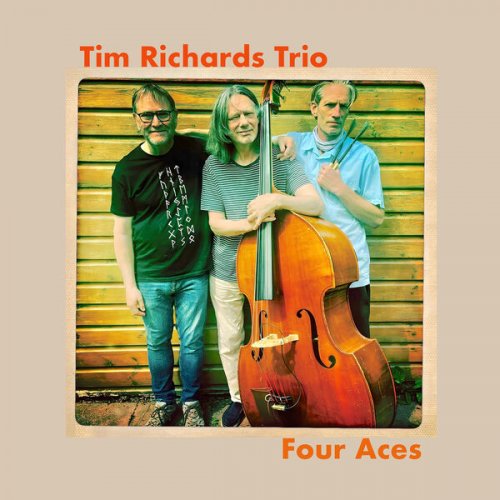
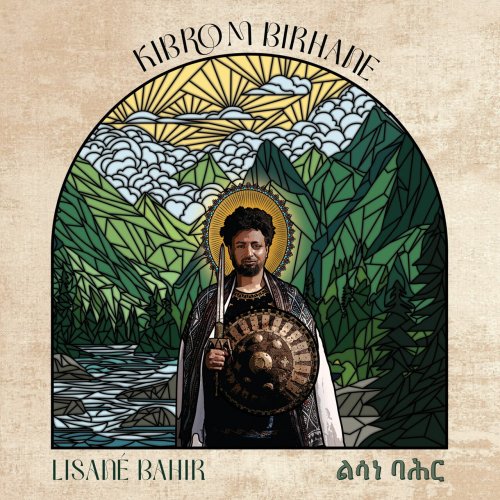
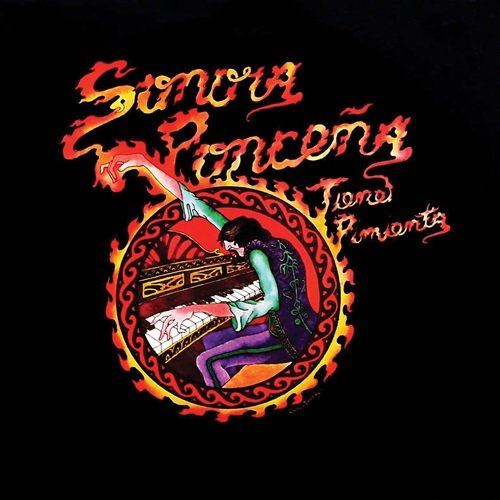
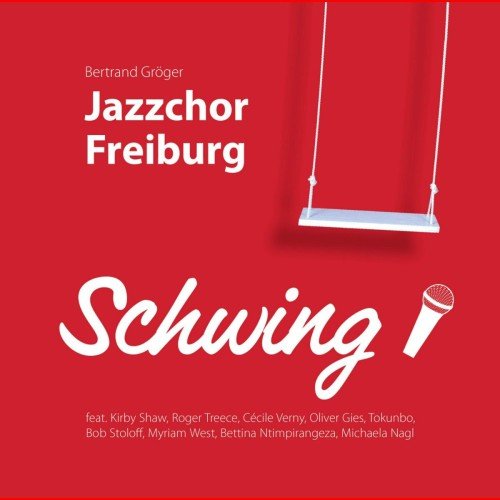

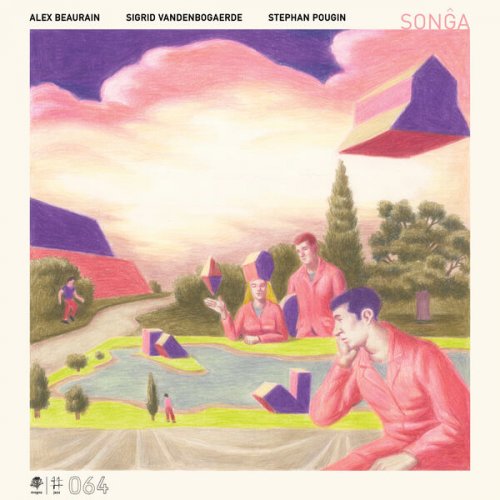
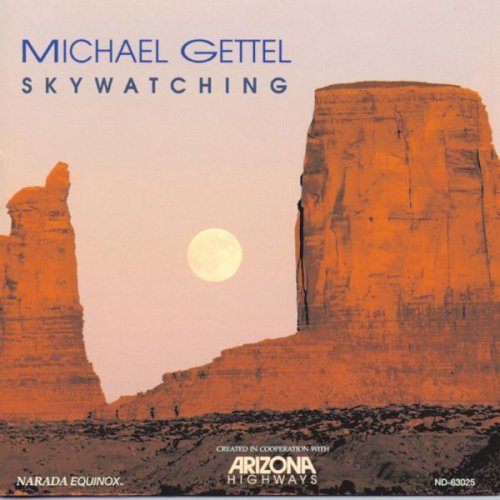
![Travis Jenkins Piano Trio - Jazz in Meanjin 020 (Live at JMI) (2025) [Hi-Res] Travis Jenkins Piano Trio - Jazz in Meanjin 020 (Live at JMI) (2025) [Hi-Res]](https://www.dibpic.com/uploads/posts/2025-12/1765862611_a2068783921_10.jpg)